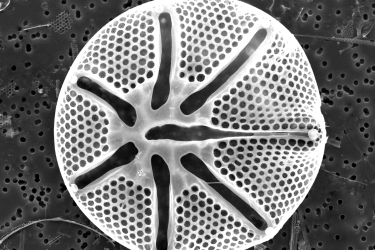Watch your step! Here in the Chemistry Lab we can filter over 125 liters of water a night: that's 33 gallons if you want to visualize spilled milk! The eDNA (environmental DNA) sampling process involves using as much water as you can reasonably process to collect the maximum amount of DNA - the ocean is large and dilution is a big factor. On this cruise, we are sampling at stations along the acoustic transects, at multiple depths, plus adding in regular control samples. For every sample we collect, we are filtering 2.5 L of sea water-- that adds up to a lot of water! If you know anyone that needs 1 micron filtered sea water, I happen to know where you could find some...

We use Whirl pak bags to collect water, and the pitchers are there to support the bag while we rock, roll, and pitch about at sea. Note the red lid of the bleach bucket--bleach is used to clean our equipment between samples and to ensure no DNA is present from fishing operations. Behind the bleach bucket is the 20 L carboy that collects the filtered sea water. Photo: NOAA Fisheries

The door to the Chemistry Lab. The sign reads "Mind Your Step. Chem Lab Night Ops involves high volumes of water, mind your step and look for spills! Thanks, The Busy Night Scientist." Photo: NOAA Fisheries

Collecting water from the Niskin bottles after CTD157 (bottom depth 150 m) just north of the OR-CA border. Photo: NOAA Fisheries


